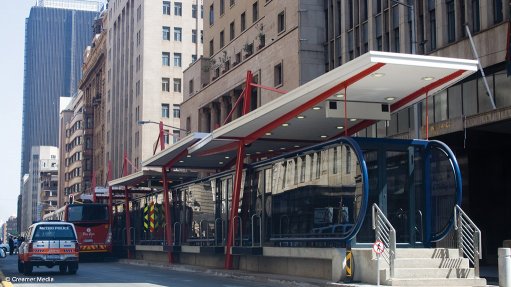
Rea Vaya
Photo by: Duane Daws
As South Africa advanced its bus rapid transit (BRT) ambitions, care should be taken not to view the initiative as the standalone solution to the nation’s public transport constraints.
The country had to ensure the efficient integration of different modes of public transport, including cycling, walking, trains and taxis, with some form of linkage to each other for seamless navigation within the nation’s major cities, asserted City of Joburg executive director for transport Lisa Seftel on Wednesday.
Speaking at the African Association of Public Transport congress, in Boksburg, she noted that Johannesburg’s Rea Vaya project was the backbone of public transport infrastructure in the city; however, spatial inequality, accessibility and affordability remained inhibitors to increasing the ridership on the system.
Rea Vaya’s low ridership – at less than 40 000 passengers per weekday – had been attributed to a lack of spatial integration in the nation’s most populous province and the easier accessibility and affordability of minibus taxis for many of South Africa’s poverty-stricken citizens.
Engineering News previously reported that, between November 2013 and June 2014, minibus taxis moved one-million passengers a day, while the Gautrain recorded 48 000 riders on a weekday.
When Rea Vaya launched, it was expected that Phase 1A would carry around 42 000 people a day, while Phase 1B, which was rolled out last year, would add another 60 000 daily passengers.
Now, as the BRT project prepared to enter its next phase of development in 2017, Seftel said a new approach had to be taken, based on the lessons learnt during and after the first two phases.
She said more attention needed to be applied to enabling easy walking access, improving the surrounding public environment to address users’ safety concerns and boosting public amenities around the system.
BRT projects should be leveraged as a tool to develop a fully integrated public transport system aligned with all other modes of transport, including taxis, cycling and trains.
BRT was currently seen as a public transport replacement alternative for users, particularly for minibus taxis, but, Seftel believed, it should be seen as a tool for increasing public transport use and used as a complementary mode of transport.